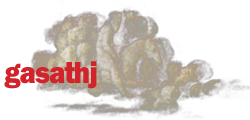the movie with generated music and generated architecture interior and exterior spaces.
the generated music score.
The generative music design has always fascinated me, perhaps re-running my experiences of jazz player in the sixties. I always have developed, in parallel with my activity of generative designer, a possible generative software in the field of music.
From few years, I have progressively designed Musicablu, a generative software able to generate musical scores as midi files. These generated midi files refer to an orchestra of 12 instruments, with four soloists. They are generated through a non-linear process of progressive increase of complexity that is, at least partly, a mirror of my generative software in the field of three-dimensional objects and architectures.
The aim is very ambitious. The challenge is to design algorithms for running a creative compositive process able to generate pieces of music belonging to a recognizable musical idea. At first, I tried to reach this result by designing the logics able to generate the harmonic structure, the geometry of the rhythm and the metrics of the musical phrases, as well as the character of the sound. But the challenge was made by designing algorithms able to produce recognizable melodies, as unique melodies that are characterized by the same musical idea. More, the challenge was to generate melodies that can be remembered, and that can be easily whistled. I tried to design that by generating a set of riffs linked one each other and by using counterpoint logics for managing the motifs inside the melody.
This part of the generative project has been the most difficult and complex. And it was born from an investigation and from an interpretation of how some musical ideas, from J.S.Bach to the Beatles, from Coltrane to many popular songs, can be strongly recognizable, able to be remembered and unique.
The generative structure has been created by proceeding from two or more riffs, small sequences of notes with well-identified geometry, rhythm, and volume, that are the fist event generated by MusicaBlu in real time. These riffs are able to follow the geometric structure and the harmony that has been created in parallel. The melody is generated by using these riffs, their inverse, and retrograde canons. The counterpoint fits the progression of the generated harmony. Not only. The riffs themselves can be varied during the use, but only until this variation doesn't change their recognizability and the clarity of their character, that is done with the variation of only single note or its single rhythm. Inserting, in this sequence of replaying of the riffs, phrases that are instead generated through other algorithms that can be based on progressive interpretation of my imaginary and references. The whole score is generated progressively but also created by running again the same steps with a different point of view. The different points of view are mainly identified with the different accords of the harmony by focusing the character of these accords (major, minor, seventh, and so on) and their sequence.
The scores and the musical traces presented in this article refer to the last results of my generative project MusicaBlu, that is still in progress. Following my approach to generative projects, the scores were not modified after their generation but were only played using a set of digital musical instruments.
Following the strong relationship between my generated music and my generated architectures, I am presenting these musical traces made with MusicaBlu together with some architectures generated with my software Argenia.
paper at: https://www.generativeart.com/ga2013xWEB/proceedings1/6.pdf
